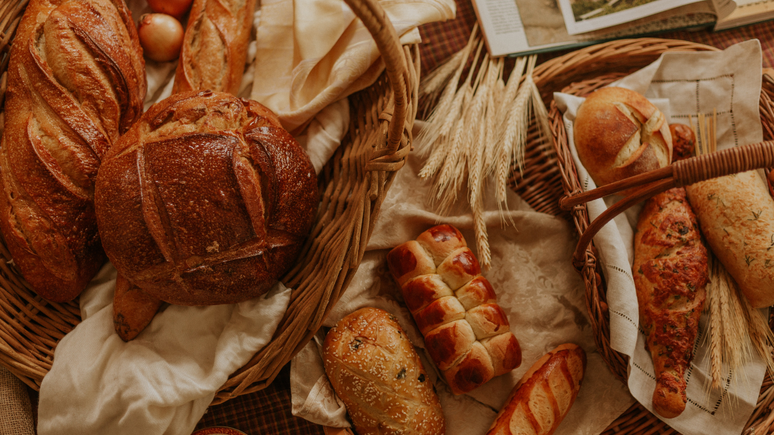Although it offers nutrients, such as complex fibers and complex vitamins, the food has been seen as a villain; Learn how to include it in every day
He lives with humanity for at least 6000 years and since then he appears to the tables of the four corners of the world, in different formats and recipes. However, even with this popularity, in recent decades, bread has been connected to health damage. In the list of problems it is obesity, inflammation and even cancer.
Scientist Universities of United States and from United Kingdom He decided to study the link with tumors and made a review of the studies, recently published in the magazine Current developments in nutrition. The conclusion states that food consumption is not related to the increase in cancer risk.
“Work also shows that whole bread can also have a protective effect”, comments the nutritionist Giuliana Modenezifrom Einstein Sport and Rehabilitation Spacefrom Israelite Hospital Albert Einstein. There is evidence that the fibers and other nutrients present in foods help reduce the risk of illness in the intestine. In addition, there are other reasons why bread can add to a balanced and healthy diet.
Pay attention to fashion diets
This food was prohibited by the food routine of many people without scientific justifications. This often occurs in the wave of diets of the moment, in particular the Low carboidalthat propagate the restriction of carbohydrates. However, what preaches modern nutrition is that, with balance, this macronutrient should never be excluded.
Carbohydrate is a source of energy, therefore, indispensable for performing daily activities, exercise and brain functioning. The lack can trigger discouragement and influence humor, because it participates in the production of neurotransmitters, chemical messengers responsible for communication between neurons involved with well -being, such as serotonin.
Another reason behind the negative reputation of bread is gluten. It is a protein present in wheat and other cereals, such as barley and rye, as well as their derivatives. He is responsible for the coherence of food, supports the mass and is behind the fritta of the cortex and the softness of the crumb.
Possible damage
Despite these culinary predicates, the substance causes damage to the carriers of celiac disease, an autoimmune disorder that affects 1% of the world population. In celiacs, one of the members of gluten, called Gliadine, triggers an inflammatory response, capable of damaging the entities, that is, intestinal cells. The result of this process is diarrhea, the malabsorption of vitamins and minerals and the compromise of the nutritional state. The total exclusion of gluten foods is the treatment strategy for this specific condition.
There are also individuals with gluten or sensitivity intolerance – in this case, the digestion of this protein does not occur efficiently, with consequent abdominal distension, disorders and other disorders. To beat the hammer for both celiac disease and resistance, medical diagnosis is essential after the exams.
In the case of those who do not suffer from these conditions, there is no reason to eliminate bread and other foods with gluten with everyday life. However, in recent times the antigrlyutten diets so calls have sprung up, focusing on weight loss and without any support for science. The same scarcity of studies is also observed for the accusation that the property would have an inflammatory effect.
How to insert bread in everyday life?
In the dietary plans considered exemplary, such as the Mediterranean dietBread has its guaranteed space, but is consumed in a balanced context, without excess. “It may appear for breakfast or intermediate snack and even dinner, as an option for carbohydrates”, The expert says.
Here are some strategies for food to be part of the menu in a healthy way:
- Opt for natural fermentation versions: breads developed with the LeverThat is, through natural fermentation, they tend to be digested better. Another advantage is that these products are devoid of preservatives and other additives.
- Choose full bread: Compared to white bread, the wholemeal is richer in the vitamins of the complex B. But the culminating point is the fibers, the nutrients that favor the intestine and contribute to satiety, brake the appetite. Even better if in the recipe, in addition to all the flour, there are cereals and seeds.
- Capriche in combinations: Pontare the shot with good sources of protein and fat helps in glycemic control and turns off more. Magri cheeses, eggs, grated chicken, salmon patinas, as well as chickpeas and tofu paste, are some protein allies. Fat providers include avocado and olive oil, for example. Vegetables such as lettuce, rocket, carrots, tomatoes, among others, enriched with any sandwich. It is also advisable to avoid sausages, that is, salami, turkey breast, ham and mortadella. This group appears in studies for the relationship with the increase in cancer risk.
- Pay attention to the labels: There are many bread options on supermarket shelves and some are even ultra elaborate, which exceed fatty additives, sugars, sodium and chemicals. Therefore, scan the packaging. Start with the list of ingredients. The recommendation is preferred by shorts and preferably without strange names. Food components should appear decreasingly, that is, those that are in the largest quantity in the product appear first. It is also important to compare the nutritional tables.
*Source: Einstein Agency
Source: Terra
Ben Stock is a lifestyle journalist and author at Gossipify. He writes about topics such as health, wellness, travel, food and home decor. He provides practical advice and inspiration to improve well-being, keeps readers up to date with latest lifestyle news and trends, known for his engaging writing style, in-depth analysis and unique perspectives.






![Tomorrow belongs to us: What awaits you in the 1926 episode, on Monday, on April 21, 2025 [SPOILERS] Tomorrow belongs to us: What awaits you in the 1926 episode, on Monday, on April 21, 2025 [SPOILERS]](https://fr.web.img3.acsta.net/img/dd/bb/ddbba5acd5111bbb99bd604efe2b2b4f.jpg)

